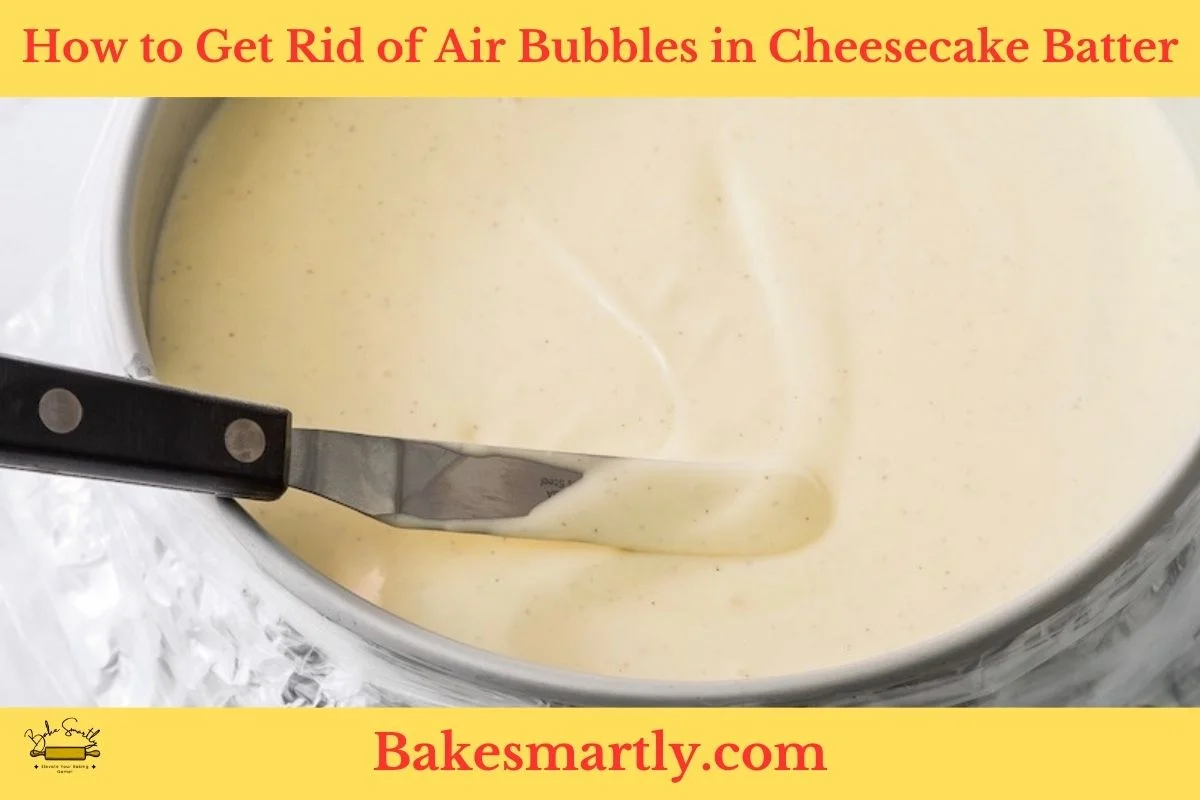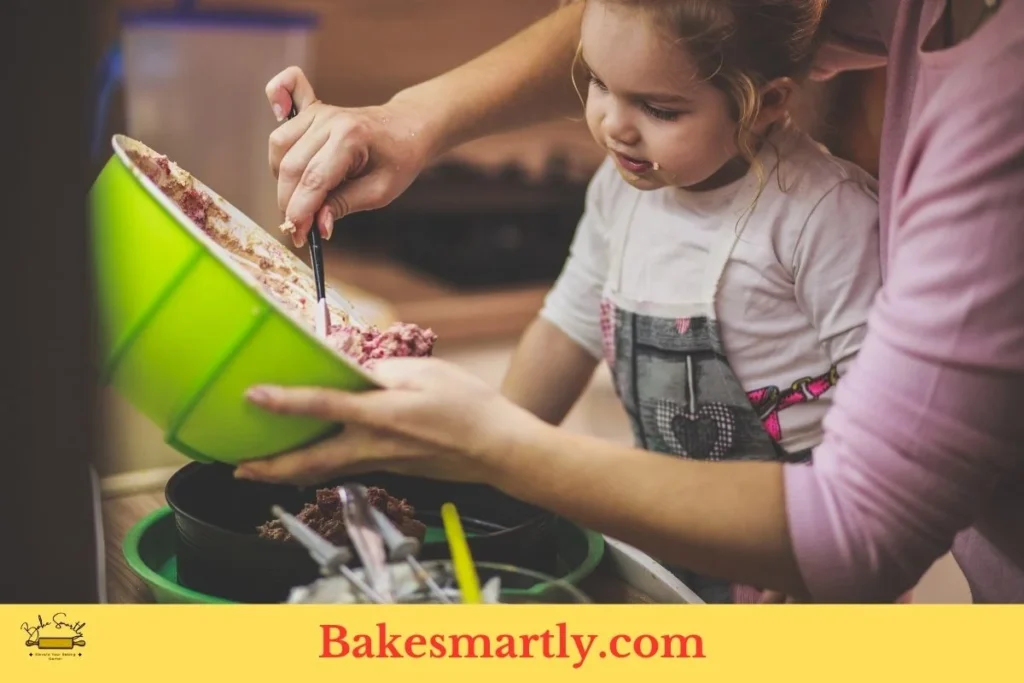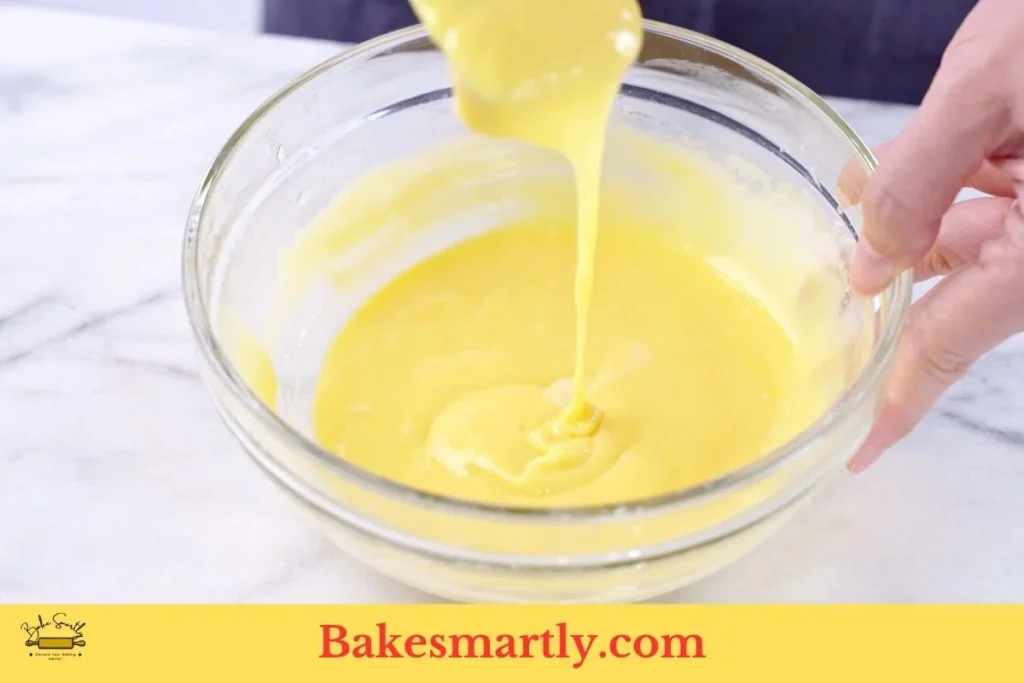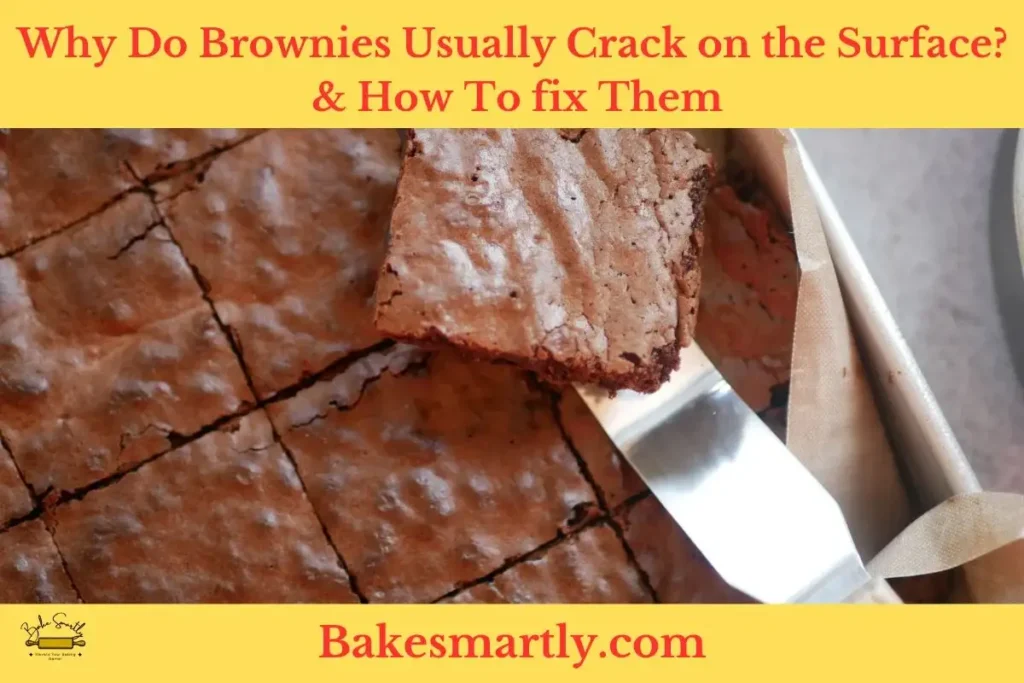
How to Get Rid of Air Bubbles in Cheesecake Batter
Calling all cheesecake fans! If you’ve ever admired a perfectly smooth and creamy slice of cheesecake, you know how important it is to make your cheesecake without those pesky air bubbles. Don’t worry, we’ve got your back.
In this article, we’ll share the best tips for nailing that bubble-free cheesecake batter. From picking the right ingredients to perfecting your mixing technique, we’ll walk you through every step to ensure your cheesecake comes out as silky as can be.
We’ll explore the science behind avoiding air bubbles, clear up common misconceptions, and get advice from expert bakers. Whether you’re a newbie or a cheesecake pro, you’ll find tons of helpful tips and tricks in this article to step up your cheesecake game.
Table of Contents
ToggleUnderstanding Why a Smooth and Creamy Batter Is Key
A smooth and creamy cheesecake batter is the foundation of a dessert that melts in your mouth and leaves you craving more. But why is it so crucial to have a batter free from air bubbles and inconsistencies? Let’s dive into the reasons behind this.
- First and foremost, a smooth batter affects the overall texture of the cheesecake. When you take a bite of a well-made cheesecake, you expect it to be velvety and rich, not disrupted by unpleasant air pockets. Air bubbles can create an uneven, pockmarked surface and a less-than-ideal mouthfeel.
- Moreover, the way a cheesecake looks matters. A smooth, flawless surface isn’t just easy on the eyes; it’s also a testament to the baker’s skill. A cracked or bubbly cheesecake might not look very appetizing, whereas a perfect cheesecake is a feast for your eyes before it even hits your taste buds.
- Additionally, avoiding air bubbles ensures that your cheesecake bakes evenly. When you bake a cheesecake with a smooth batter, it’s more likely to cook uniformly, reducing the risk of overcooked edges and an undercooked center. Consistent cooking is key to achieving the desired taste and texture throughout the whole cheesecake.

The Role of Ingredients in Achieving a Bubble-Free Cheesecake
Creating a bubble-free cheesecake is an art, and it’s all about understanding the essential role of ingredients in this culinary masterpiece. Let’s uncover the magic of the ingredients that lead to a velvety, bubble-free cheesecake.
- Cream cheese is often the star player, serving as the foundation of your cheesecake. It should be rich, full-fat, and brought to room temperature. Cream cheese is what gives your cheesecake its luscious texture and ensures there are no unpleasant lumps or air pockets. A perfectly smooth cream cheese blends seamlessly with other ingredients, resulting in a silky, bubble-free batter.
- Granulated sugar has a dual role. It sweetens the cheesecake, but it’s also crucial for the batter’s texture. Sugar helps create a smooth, uniform mixture, preventing the formation of air bubbles during mixing.
- Eggs, when used at room temperature, act as binders and structure builders. Cold eggs can lead to a curdled appearance and contribute to air bubble issues. Using room-temperature eggs ensures they integrate smoothly with other ingredients, keeping the batter consistent and air-free.
- Vanilla extract enhances the cheesecake’s flavor and complements the creamy texture. It’s that subtle touch that makes your cheesecake truly unforgettable.
- Sour cream adds a unique tanginess and creaminess that’s essential for a flawless cheesecake. It helps create a silky, bubble-free batter while imparting a delightful zing to the final product.
Avoiding Common Mistakes That Lead to Air Bubbles
Creating a flawless cheesecake isn’t just about knowing what to do but also understanding what to avoid. To achieve that air bubble-free perfection, it’s crucial to be aware of common mistakes that can sabotage your cheesecake. Here are some pitfalls to steer clear of:
- Over-Mixing: One of the most common culprits behind air bubbles is over-mixing the cheesecake batter. Vigorous mixing can introduce excess air, leading to bubbles. To prevent this, mix your ingredients just until they’re combined.
- Cold Ingredients: Starting with cold cream cheese, eggs, and other ingredients can result in lumps and air bubbles. Make sure all ingredients are at room temperature for a smoother batter.
- High Mixing Speed: Mixing at a high speed can introduce more air into the batter. Stick to a low or medium-low setting on your mixer to reduce the risk of bubbles.
- Pouring Too Quickly: When transferring the batter to the crust, avoid pouring it too quickly. A hasty pour can trap air within the batter, so take your time and pour gently.
- Tapping the Bowl: After mixing, don’t forget to tap the bowl gently on the countertop. This helps dislodge any air bubbles that might be hiding.
- Skipping the Water Bath: Baking your cheesecake in a water bath is a must. Skipping this step can lead to uneven baking and air bubble formation. The water bath maintains a consistent temperature, ensuring a smooth, crack-free cheesecake.
By avoiding these common mistakes, you’ll be well on your way to crafting the perfect cheesecake. Remember, patience and attention to detail are key to achieving that velvety, air-bubble-free dessert your guests will love.

Perfecting the Mixing Technique for Air Bubble-Free Cheesecake Batter
Now that we’ve covered the importance of a smooth and creamy batter, the role of ingredients, and how to avoid common mistakes, let’s dive into the critical aspect of mastering the mixing technique. Achieving that elusive air bubble-free consistency depends heavily on how you mix your cheesecake batter.
Here’s what you need to know:
- Gentle and Gradual Mixing: The key to an air bubble-free cheesecake batter is gentle mixing. Start by beating the cream cheese on low to medium-low speed until it’s smooth and creamy. Avoid high-speed mixing, which can introduce excess air. Gradually incorporate the sugar, eggs, and other ingredients one at a time, ensuring each addition is well combined before adding the next.
- Scrape the Bowl: To ensure there are no hidden pockets of unincorporated ingredients at the bottom of the mixing bowl, pause and scrape the sides and bottom of the bowl with a spatula. This step ensures an even mixture and reduces the chances of air bubbles.
- Minimal Agitation: Once all the ingredients are in, be cautious about over-mixing. You want to mix just until everything is combined. Over-agitating the batter can create air bubbles, so keep it gentle and controlled.
- The Art of Hand Mixing: If you’re worried about using a mixer, you can always opt for hand mixing. Use a spatula or a wooden spoon to gently fold the ingredients together. This method allows for a high level of control and minimizes the risk of over-mixing.
- Sifting for Smoothness: As mentioned earlier, consider sifting your dry ingredients like flour or cocoa powder before adding them to the batter. Sifting not only helps prevent lumps but also contributes to a smoother, air-bubble-free mixture.
- Check for Lumps: Before proceeding with your batter, check for any lumps in the cream cheese or other ingredients. If you find lumps, use a fine-mesh sieve or strainer to remove them, ensuring a consistently smooth batter.
- Patience Is Key: Achieving an air bubble-free batter requires patience and attention to detail. Take your time during the mixing process, and remember that a little extra care can make all the difference in the world of cheesecake baking.
Troubleshooting Tips for Fixing Air Bubbles in Cheesecake Batter
Sometimes, despite your best efforts, a few air bubbles may still sneak into your cheesecake batter. But don’t worry; there are ways to troubleshoot and rectify the situation.
Here are some valuable tips to fix air bubbles in cheesecake batter:
- Popping with a Toothpick: If you spot air bubbles while your cheesecake is in the pan, gently insert a toothpick or skewer into the bubble and stir it in a circular motion. This will help the air bubble escape and flatten the batter. Be careful not to puncture the crust.
- Gentle Tapping: After pouring the batter into the crust, tap the pan on your countertop to release any trapped air. This simple step can make a big difference in preventing air bubbles from forming during baking.
- Pre-Baking Settling: Allow your cheesecake batter to sit in the pan for a few minutes before baking. This gives any lingering air bubbles a chance to rise to the surface and pop on their own.
- Agitating the Batter: During the baking process, you can occasionally agitate the batter by gently shaking the pan. This helps air bubbles rise to the top and escape, leading to a smoother texture.
- Using a Water Bath: We can’t stress this enough—a water bath can help prevent and fix air bubbles. The moisture ensures an even bake and minimizes air bubble formation during baking.
- Sifting Ingredients: Before incorporating ingredients into your batter, consider sifting them. This process helps break down any lumps, creating a smoother mixture and reducing the chances of air bubbles.
- Sudden Temperature Changes: Drastic temperature changes can cause cracking and air bubbles. To avoid this, cool your cheesecake gradually by turning off the oven and letting it cool with the door slightly ajar for about an hour.

Advanced Techniques for a Silky Smooth Batter
For those bakers who have already mastered the basics and are ready to take their cheesecake-making to the next level, here are some advanced techniques to ensure a truly silky smooth batter:
- Double Sifting: Elevate your batter’s smoothness by sifting your dry ingredients not once but twice. This meticulous step guarantees that no impurities or clumps mar the perfection of your cheesecake.
- Temperature Control: Delve deeper into the importance of ingredient temperatures. Discuss how using ingredients within a specific temperature range (e.g., 68-70°F or 20-21°C) can further minimize the likelihood of air bubbles.
- Silicone Spatula Usage: The flexibility of silicone spatulas ensures a gentle approach to folding and mixing, preventing the introduction of excess air during the process. Explore how this tool can contribute to a smoother batter.
- Incorporating Ingredients in Stages: For ultimate blending and minimal air bubble formation, advanced bakers can experiment with adding specific ingredients, such as eggs or sour cream, in stages. Discuss the nuances of this technique.
- Custom Flavors and Mix-Ins: Learn how to infuse your cheesecake with custom flavors and mix-ins like fruit puree, chocolate chips, or spices. Advanced bakers can explore the challenges of maintaining a smooth batter while incorporating these additional elements.
How to Get Rid of Air Bubbles in Cheesecake Batter | Final Thoughts
In conclusion, mastering the art of creating air bubble-free cheesecake batter is a rewarding endeavor for any dessert enthusiast. A smooth and creamy batter is not only visually appealing but also crucial for the ultimate indulgent experience.
Understanding the significance of each ingredient, avoiding common pitfalls, and perfecting the mixing technique are essential steps in achieving that velvety perfection.
For those seeking to elevate their cheesecake game, advanced techniques like double sifting, precise temperature control, and the use of silicone spatulas offer even greater control over the texture of your batter. Experimenting with custom flavors and mix-ins can take your cheesecake to new heights while maintaining that sought-after smoothness.
Remember, the key lies in patience, attention to detail, and a genuine passion for crafting the perfect cheesecake. So, whether you’re a novice or a seasoned pro, these insights and tips will guide you toward creating cheesecakes that not only taste divine but also look and feel like a work of art. Happy baking!
Lindsey Mackenzie
Warning: Undefined variable $post in /home/u154887947/domains/bakesmartly.com/public_html/wp-content/plugins/gourmet-core/templates/blocks/gourmet-core-block-post-related.php on line 140
Warning: Attempt to read property “ID” on null in /home/u154887947/domains/bakesmartly.com/public_html/wp-content/plugins/gourmet-core/templates/blocks/gourmet-core-block-post-related.php on line 140
About me
Hi there! I’m Lindsey Mackenzie, the founder of Bake Smartly. Baking has been my passion since childhood, growing up in my father’s bakery. With Bake Smartly, I’m excited to share my love for all things sweet and savory. Join me on this delicious journey as we whip up scrumptious treats and sprinkle joy into every bite!






